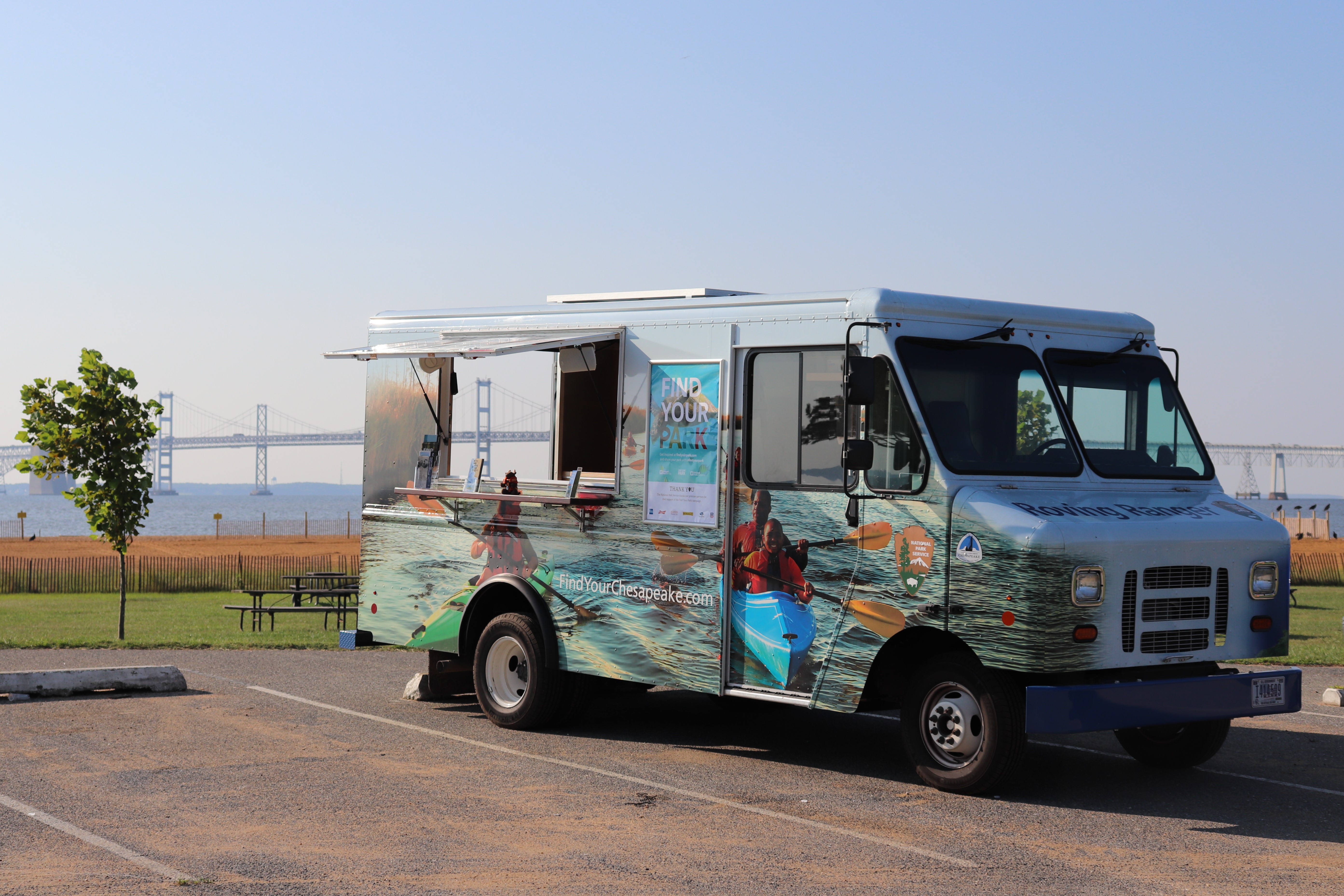Trail will focus on underserved communities with their new “mobile visitors’ center”.

The Chesapeake Roving Ranger—the inspiration behind the SSBNHT’s new mobile visitors’ center—has found success in engaging new Trail audiences. Credit: NPS / Patrick Smith
The Star-Spangled Banner National Historic Trail (SSBNHT) is creating a mobile visitors’ center to appear at various Trail partner sites and public events throughout the Chesapeake Bay region. The mobile center—made up of a retrofitted step van similar in size and style to a delivery truck—will provide many of the functions of a standard visitors’ center and be a place for visitors to interact with an NPS ranger, pick up brochures about the Trail, and participate in educational and interpretive programs.
The inspiration for this project came from the Chesapeake Roving Ranger—the mobile visitors’ center created for the Captain John Smith Chesapeake National Historic Trail (CJSCNHT) in partnership with Chesapeake Bay Gateways Network and the Chesapeake Conservancy. In three years, the Chesapeake Roving Ranger went to 78 events and engaged over 11,000 people.
The Star-Spangled Banner National Historic Trail has purchased a truck and will soon begin transforming it from the standard manufacturer’s design into an eye-catching and welcoming vehicle. The first step is the design, fabrication, and installation of a full, four-color exterior vehicle wrap (a large vinyl decal applied directly over paint) that features beautiful imagery to highlight the Trail’s interpretive themes, natural landscapes, and recreational activities. The design will identify the visitor contact station, reinforce the National Park Service Brand, and increase awareness of the Trail. The second step will be the design and fabrication of the van’s cargo space, which will involve the creation of cabinets, shelves and drawers, lighting and electrical systems, solar panel and power supply, and the installation of a pop-up window. The goal is for the truck to be ready by summer 2022.
It has become clear that there is a need for National Trails to 1) directly engage under-resourced communities and 2) actively remove barriers to learning about important events in American History from varied and diverse perspectives. This mobile visitors’ center will allow the National Park Service to travel to individuals who live and work along the SSBNHT but may not have the means or opportunity to experience and engage with the Trail firsthand. This mobility will enable representatives of the SSBNHT and its partners to both increase accessibility to SSBNHT resources and expand its reach to a wider and more diverse audience.
To learn more about the mobile visitors’ center projects at both the CJSCNHT and the SSBNHT, contact Kate Marks at kate_marks@nps.gov.
To learn more about how the Captain John Smith Chesapeake NHT and two National Recreation Areas have been using mobile visitor centers to engage communities, check out the following resources:
Chesapeake Roving Ranger Season Recaps,